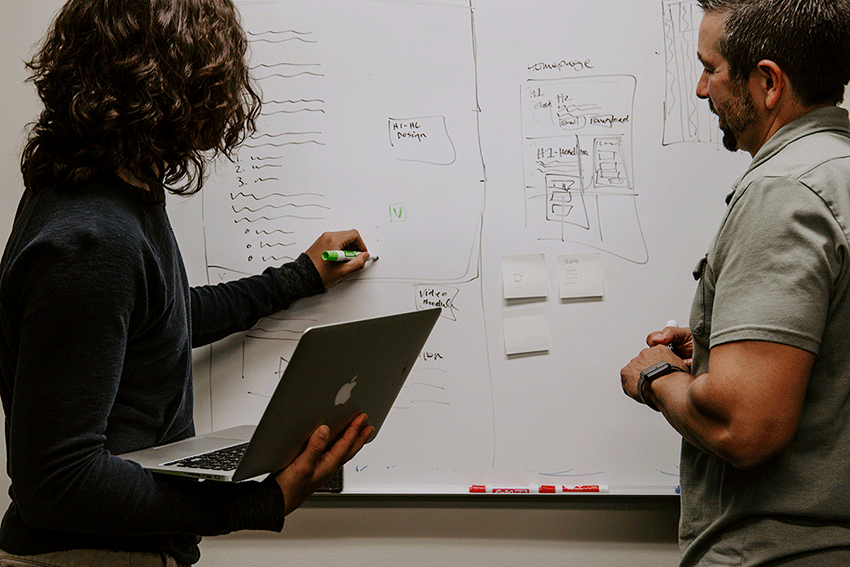Our guest author Heather Kappes, a fellow at GSA’s Office of Evaluation Sciences (OES) and professor of marketing at the London School of Economics and Political Science, previously shared how OES helped the Defense Health Agency (DHA) improve their customer enrollment in a secure online messaging system.
Read on to hear more from Heather about how agencies can improve customer experience by using evidence-based insights!
In my last post, I shared a story of a hypothetical patient visiting her doctor at the Naval Medical Center Camp Lejeune and the challenge of encouraging patients to enroll in the secure online messaging system. OES helped DHA incorporate evidence-based insights, resulting in higher enrollment in their online patient portal.
Want to learn how evidence-based insights can help your agency? Here are three key ways we help agencies address common challenges and improve customer experience:
Federal government customers are the individuals and groups that interact with a Federal government agency or program. We say they’ve had a good customer experience when they report (usually via a survey) that they trust the agency or program and are satisfied with the service. Federal government customers need a huge variety of services, from obtaining benefits, to ordering a passport, to buying stamps. But across this variety of services, trust and satisfaction are driven by factors such as ease of interaction, transparency in communication, and employee warmth and helpfulness during a customer interaction.
- Ease. Agencies can improve customer satisfaction by applying insights on how to make the customer experience easier. Our previous post about Shannon enrolling in the online messaging system is an example of making an interaction easier for the customer. OES and DHA designed an approach to better inform patients about the system and make it easier for them to enroll.
- Transparency. Including a timeline that makes government operations more transparent proves helpful for customer satisfaction. For example, in a 2019 collaboration with USAGov, transparency helped to increase survey responses.
- Human connection. Using a personal signature or an employee photograph can improve customer satisfaction. One version of a communication about the Free Application for Federal Student Aid included a personal message from then-First Lady Michelle Obama. Elements that build a personal connection between customers and government service providers can be an essential and easy change.
In the above USAGov example, OES compared survey completion and email engagement (e.g., opens and clicks) to build evidence about how customers responded to different versions of a message or process. In fact, many agencies are already conducting this type of “A/B testing” to collect information about customer behaviors. This testing is an effective way to meet the 21st Century IDEA requirements to modernize websites, digitize services and forms, and improve customer experiences.
OES helps agencies apply these experiences and ideas to federal programs. Customer feedback data from existing surveys can help identify the key drivers of satisfaction in a particular program. Then, behavioral insights can be mapped directly to these drivers. To measure how well the changes worked, OES uses rigorous evaluation and administrative data on outcomes like program access, completion times, or response rates to measure effectiveness. Learn more about OES’ evaluation methods here.
Whether or not you currently have customer feedback data available, often OES projects begin by creating a customer journey map. OES journey maps include a “behavioral” layer that identifies psychological tendencies that play a role at key decision points in the customer’s journey, as seen in this GSA Travel Timing Behavioral Map. These maps help agencies prioritize which insights to apply, and are also used to identify the areas where applying behavioral insights may not be effective.
It’s easy to lose sight of individual challenges and realities when designing and implementing large scale federal services and programs. Uniting expertise in customer experience, evidence-based insights about human behavior, and rapid and rigorous evaluations can help bring these interactions and people back into focus.



